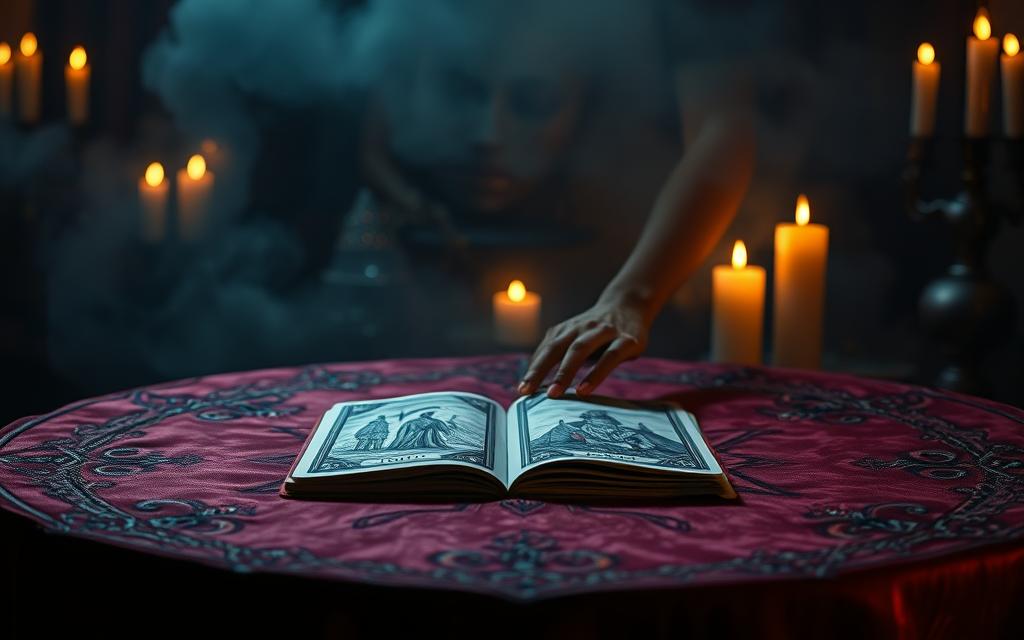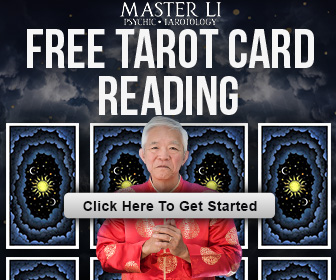The world of tarot card reading has long fascinated many, sparking curiosity and debate about its validity and the mysteries it claims to unveil.
Divination, the practice of seeking knowledge of the future or hidden truths, is an ancient art that tarot cards are deeply rooted in. For those intrigued by the mystique of tarot, understanding its mechanics and the various perspectives surrounding it can be enlightening.
As we delve into the realm of tarot, we explore not just its history and practices but also the skepticism and belief that surround it. For more insights or to experience tarot card reading, you can connect with experts who can guide you through this mystical journey.
Table of Contents
The Ancient Origins of Tarot Cards
With roots in 15th-century Europe, tarot cards have evolved significantly over the centuries. Initially used as a game, tarot cards were part of the traditional card games played among the nobility.
From Playing Cards to Divination Tools
The transition of tarot cards from a simple playing deck to a divination tool is a fascinating story. Tarot history shows that by the 18th century, tarot cards began to be associated with mysticism and divination. The Tarot de Marseille and the Rider-Waite tarot deck are two of the most influential decks that contributed to this transition.
The tarot deck became more than just a set of cards; it became a tool for understanding the self and the universe.
| Deck Name | Year | Notable Features |
|---|---|---|
| Tarot de Marseille | 16th century | Simple, symbolic illustrations |
| Rider-Waite Tarot | 1909 | Detailed, story-driven imagery |
Evolution Through Different Cultures and Traditions
As tarot cards spread across different cultures, they absorbed various mystical and esoteric traditions. The symbolism and imagery used in tarot decks began to reflect a blend of European folklore, alchemy, and astrology.
“Tarot cards are a mirror of the human condition, reflecting our deepest fears, desires, and motivations.”
The evolution of tarot cards through different cultures has enriched their significance as divination tools. Today, tarot readings are used worldwide for guidance and self-reflection.
Understanding How Tarot Reading Works
To comprehend how tarot reading works, it’s essential to delve into the composition of a tarot deck. Tarot reading is a multifaceted practice that involves interpreting cards drawn from a deck, with each card having its own symbolism and meaning.
The Structure of a Tarot Deck
A standard tarot deck consists of 78 cards, divided into two main categories. Understanding the tarot deck structure is fundamental to grasping how tarot readings are conducted. The deck is composed of the Major Arcana and the Minor Arcana.
Major and Minor Arcana Explained
The Major Arcana contains 22 cards, each representing significant life events, themes, or archetypes. These cards are numbered from 0 (The Fool) to 21 (The World), and they hold deep symbolic meanings that are crucial to understanding the major arcana meaning. On the other hand, the Minor Arcana consists of 56 cards, divided into four suits similar to a regular playing card deck. Each suit represents a different aspect of life, and the cards within the Minor Arcana offer insights into various situations and challenges, relating to the minor arcana interpretation.
Common Spreads and Their Meanings
Tarot readings involve laying out the cards in specific patterns, known as spreads. Each spread has its own unique meaning and is used to answer different types of questions or gain insight into various aspects of life. For example, the three-card spread is commonly used to represent the past, present, and future. To learn more about how tarot cards work, you can visit this detailed guide. Understanding the different spreads and their interpretations is key to a meaningful tarot reading.
The Psychology Behind Tarot Readings
Delving into the psychology of tarot readings uncovers the intricate mechanisms that make them so captivating. Tarot readings involve a complex interplay of psychological factors that contribute to their perceived effectiveness.
The Barnum Effect and Cold Reading
The Barnum effect, also known as the Forer effect, is a psychological phenomenon where individuals give high credence to general descriptions that could apply to anyone. Tarot readers often utilize this effect through cold reading techniques, making statements that are likely to be true for a wide range of people. For instance, a reader might say, “You have been feeling uncertain about your future,” a statement that resonates with many individuals.
Symbolic Interpretation and Personal Meaning
Tarot cards are rich in symbolism, allowing readers to interpret them in highly personal and subjective ways. The symbolic interpretation of tarot cards enables individuals to connect the cards to their own experiences and emotions, creating a sense of personal relevance and meaning.
Tarot as a Tool for Self-Reflection
Many people use tarot readings as a form of self-reflection, leveraging the cards to explore their thoughts, feelings, and motivations. The process of interpreting tarot cards can facilitate a deeper understanding of oneself, encouraging personal growth and introspection.
Some key benefits of using tarot for self-reflection include:
- Encouraging introspection and personal growth
- Providing a framework for exploring complex emotions
- Fostering a greater sense of self-awareness
By engaging with tarot readings, individuals can tap into their subconscious mind and gain valuable insights into their psychological state.
Are Tarot Cards True? Examining Different Perspectives
The legitimacy of tarot cards is a multifaceted topic that encompasses various perspectives, from scientific skepticism to spiritual beliefs. To understand whether tarot cards are true, it’s essential to explore the different viewpoints surrounding their use and interpretation.
Scientific and Skeptical Viewpoints
From a scientific perspective, tarot cards are often viewed with skepticism. Critics argue that tarot readings are based on cold reading techniques and the Barnum effect, where general statements are made that apply to a wide range of people, creating the illusion of a personalized reading. For those interested in the factual accuracy of tarot readings, visiting a site with a clear fact-checking policy can provide insights into the validity of the information presented.
Skeptics also point out that there is no empirical evidence to support the claim that tarot cards can predict future events or provide supernatural insights. The scientific community generally approaches tarot cards as a form of entertainment rather than a legitimate means of divination.
Spiritual and Metaphysical Interpretations
On the other hand, many people believe that tarot cards hold spiritual significance and can serve as a tool for self-reflection and personal growth. From this perspective, tarot cards are seen as a means to tap into one’s subconscious mind and gain insights into various aspects of life. Proponents argue that the symbolism and imagery on the cards can help individuals understand their thoughts, emotions, and experiences on a deeper level.
The spiritual interpretation of tarot cards emphasizes the importance of intuition and personal connection to the cards. Believers often view tarot readings as a way to access guidance from a higher power or the universe, providing a sense of comfort and direction.
Anecdotal Evidence and Personal Experiences
Anecdotal evidence and personal experiences also play a significant role in the debate about the truthfulness of tarot cards. Many individuals report having accurate and meaningful readings that have helped them navigate life’s challenges. These personal experiences are often cited as evidence of the validity and usefulness of tarot cards.
While anecdotal evidence is not considered scientifically rigorous, it remains a crucial aspect of the tarot community. The personal connections and experiences people have with tarot cards contribute to their enduring popularity and the special place they hold in many cultures.
Modern Applications and Ethical Considerations
The modern landscape of tarot card usage is diverse, raising important questions about ethics and application. As tarot cards continue to gain popularity, their use has expanded beyond traditional divination into various aspects of contemporary culture and personal development.
Tarot in Therapy and Mental Health Contexts
Tarot cards are increasingly being used in therapy and mental health contexts as a tool for self-reflection and exploration. Therapists and counselors are incorporating tarot into their practices to help clients access their subconscious mind and gain new insights into their challenges. For instance, a study published in the Journal of Creativity in Mental Health found that using tarot cards in therapy sessions can enhance clients’ creative expression and facilitate deeper self-understanding.
Some mental health professionals use tarot as a form of narrative therapy, where the symbolism and imagery of the cards help clients reframe their experiences and develop more positive narratives about themselves. This approach can be particularly empowering for individuals dealing with anxiety, depression, or trauma.
Ethical Reading Practices and Limitations
As tarot readings become more mainstream, it’s essential for readers to adhere to ethical practices. This includes obtaining informed consent from clients, maintaining confidentiality, and being aware of their own limitations and biases. Ethical tarot readers also avoid making definitive predictions about the future, instead focusing on providing guidance and insights that clients can use to inform their decisions.
It’s also crucial for tarot readers to recognize the limitations of their practice. Tarot should not be used as a substitute for professional medical or psychological advice. Readers should be clear about their qualifications and the nature of their services, ensuring that clients understand what tarot can and cannot offer.
| Ethical Consideration | Description |
|---|---|
| Informed Consent | Ensuring clients understand the nature of tarot readings |
| Confidentiality | Maintaining the privacy of client information |
| Awareness of Limitations | Recognizing the boundaries of tarot readings |
Tarot in Popular Culture and Media
Tarot cards have become a staple in popular culture, appearing in films, television shows, and literature. They are often used as a plot device or to add symbolic depth to a narrative. The rise of social media has also led to a proliferation of tarot content online, with many readers sharing their interpretations and connecting with a wider audience.
For those interested in exploring tarot further, resources like https://trueyoutarot.com/ offer a wealth of information and guidance on tarot practices and interpretations.
“Tarot cards offer a unique mirror to the soul, reflecting our deepest fears, desires, and motivations. When used thoughtfully, they can be a powerful tool for personal growth and self-discovery.”
Conclusion: Finding Personal Truth in Tarot
The exploration of tarot cards and their role in divination reveals a complex and multifaceted practice that has evolved over centuries. From its origins as a simple card game to its current use as a tool for self-reflection and personal growth, tarot card reading has captivated individuals worldwide.
As we have seen, various perspectives on tarot cards exist, ranging from scientific skepticism to spiritual and metaphysical interpretations. While some view tarot as a form of entertainment, others see it as a means to gain insight into their lives and futures. Ultimately, the value of tarot lies in its ability to facilitate personal reflection and growth.
By understanding the different aspects of tarot card reading, individuals can form their own opinions about its validity and usefulness. Whether used as a therapeutic tool or a means of self-discovery, tarot cards can be a powerful catalyst for exploring one’s personal truth.


